Propulsion Sailssteam engine Length 32 m Tons burthen 337,500 kg | Installed power 30 kW (40 hp) nhp Launched 1826 Beam 8.2 m | |
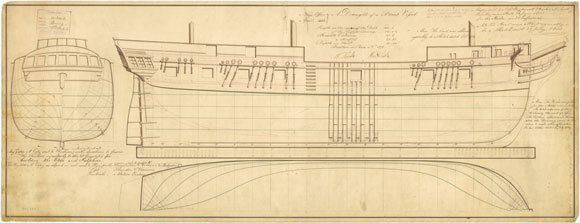 | ||
Displacement 715.3 long tons (726.8 t; 801.1 short tons) | ||
HMS Erebus was a Hecla-class bomb vessel designed by Sir Henry Peake and constructed by the Royal Navy in Pembroke dockyard, Wales in 1826. The vessel was named after the dark region in Hades of Greek mythology called Erebus. The 372-ton ship was armed with two mortars – one 13 in (330 mm) and one 10 in (254 mm) – and 10 guns. The ship took part in the Ross expedition of 1839 to 1843. She was abandoned during the Franklin Expedition and her sunken wreck was discovered in September 2014 after a long search.
Contents
- Ross expedition
- Franklin expedition
- Discovery of the wreckage
- In fiction
- In literature
- In television radio and film
- References
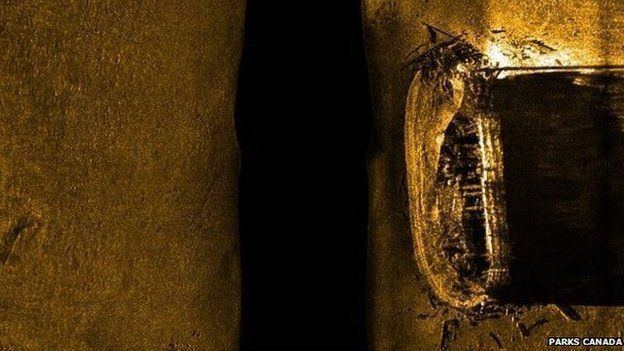
Ross expedition
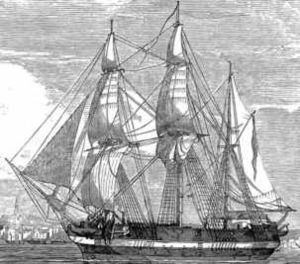
After two years service in the Mediterranean Sea, Erebus was refitted as an exploration vessel for Antarctic service, and on 21 November 1840 – captained by James Clark Ross – she departed from Tasmania for Antarctica in company with Terror. In January 1841, the crew of both ships landed on Victoria Land, and proceeded to name areas of the landscape after British politicians, scientists, and acquaintances. Mount Erebus, on Ross Island, was named after one ship and Mount Terror after the other.
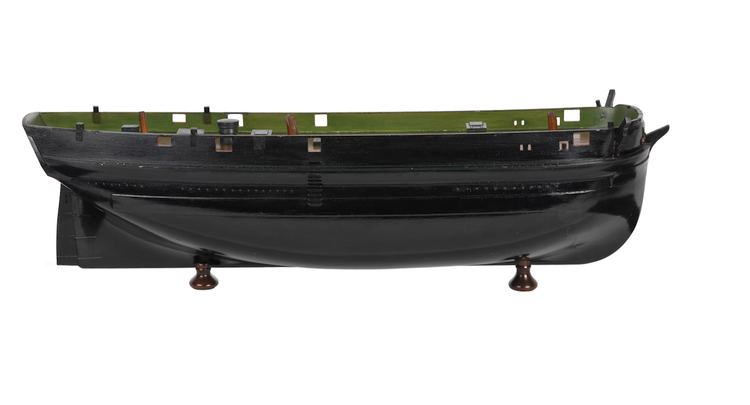
They then discovered the Ross Ice Shelf, which they were unable to penetrate, and followed it eastward until the lateness of the season compelled them to return to Tasmania. The following season, 1842, Ross continued to survey the "Great Ice Barrier", as it was called, continuing to follow it eastward. Both ships returned to the Falkland Islands before returning to the Antarctic in the 1842–1843 season. They conducted studies in magnetism, and returned with oceanographic data and collections of botanical and ornithological specimens. The plants were described in the resulting The Botany of the Antarctic Voyage of H.M. Discovery Ships Erebus and Terror in the years 1839–1843, under the Command of Captain Sir James Clark Ross.
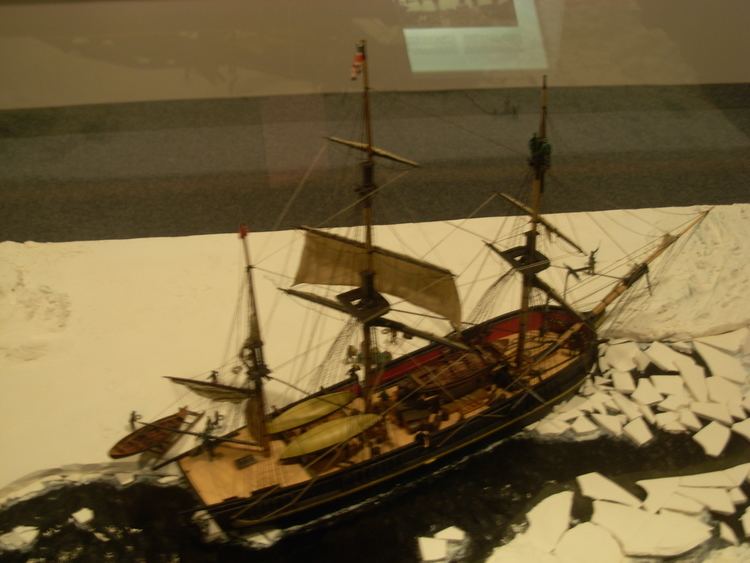
Birds collected on the first expedition were described and illustrated by George Robert Gray and Richard Bowdler Sharpe in The Zoology of the Voyage of HMS Erebus & HMS Terror. Birds of New Zealand, 1875. The revised edition of Gray (1846) (1875). The future renowned botanist Joseph Dalton Hooker, then aged 23, was assistant-surgeon to Robert McCormick.
Franklin expedition
For their next voyage, to the Arctic under Sir John Franklin, both Erebus and Terror were outfitted with steam engines from the London and Greenwich Railway steam locomotives. That of Erebus was rated at 25 horsepower (19 kW) and could propel the ship at 4 knots (7.4 km/h). The ships carried 12 days' supply of coal. The ships had iron plating added to their hulls. Sir John Franklin sailed in Erebus, in overall command of the expedition, and Terror was again commanded by Francis Crozier. The expedition was ordered to gather magnetic data in the Canadian Arctic and to complete a crossing of the Northwest Passage, which had already been charted from both the east and west but had never been entirely navigated.
The ships were last seen entering Baffin Bay in August 1845. The disappearance of the Franklin expedition set off a massive search effort in the Arctic. The broad circumstances of the expedition's fate were first revealed when Hudson's Bay Company doctor John Rae collected artifacts and testimony from local Inuit in 1853. Later expeditions up to 1866 confirmed these reports.
Both ships had become icebound and had been abandoned by their crews, totaling about 130 men, all of whom died from a variety of causes, including hypothermia, scurvy, and starvation while trying to trek overland to the south. Subsequent expeditions until the late 1980s, including autopsies of crew members, also revealed that their shoddily canned rations may have been tainted by both lead and botulism. Oral reports by local Inuit that some of the crew members resorted to cannibalism were at least somewhat supported by forensic evidence of cut marks on the skeletal remains of crew members found on King William Island during the late 20th century.
A British transport ship, Renovation, spotted two ships on a large ice floe off the coast of Newfoundland in April 1851. The identities of the ships were not confirmed. It was suggested over the years that these might have been Erebus and Terror, though it is now certain they could not have been, and were most likely abandoned whaling ships.
Discovery of the wreckage
On 15 August 2008, Parks Canada, an agency of the Government of Canada, announced a CDN$75,000 six-week search deploying the icebreaker Sir Wilfrid Laurier with the goal of finding the ships and also to reinforce Canada's claims regarding sovereignty over large portions of the Arctic.
The wreckage of one of Franklin's ships was found on 2 September 2014 by a Parks Canada team led by Ryan Harris and Marc-André Bernier On 1 October 2014 it was announced that the remains were that of Erebus. Recovery of the ship's bell was announced on 6 November 2014.
On 4 March 2015 a winter diving expedition on Erebus, consisting of Parks Canada and Royal Canadian Navy divers, was announced to commence in April.
On 12 September 2016 it was announced that the wreck of HMS Terror had been found submerged in Terror Bay, off the south-west coast of King William Island.
The wrecks are designated a National Historic Site of Canada with the precise location of the designation in abeyance.
In fiction
Erebus and Terror are mentioned in numerous fictional works.
